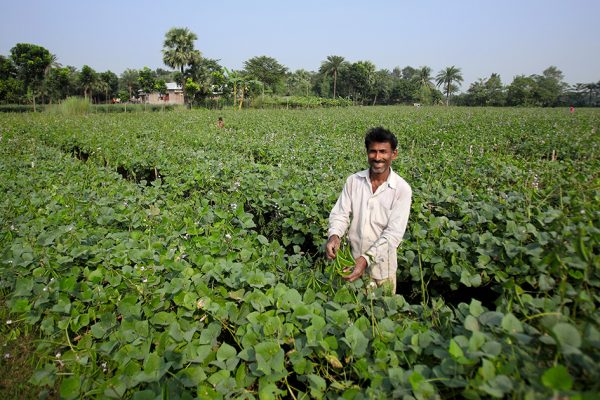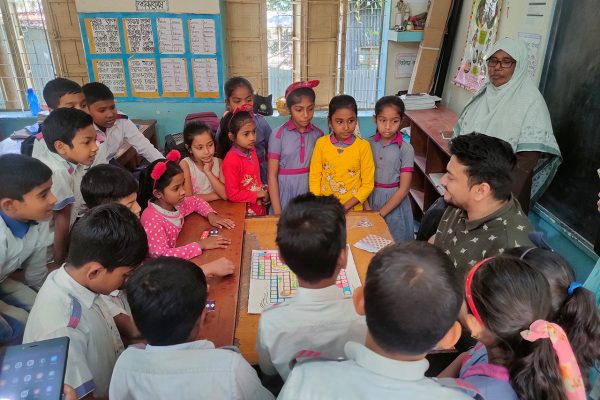Asia Society: Can the profit motive improve microlending?
Reading Time: 3 minutes
On Monday night, The Asia Society in partnership with The Schwab Foundation and WAM-NY, hosted a debate between SKS Chairperson and Founder, Vikram Akula and Grameen Foundation President and CEO, Alex Counts. The debate, which was moderated by Niki Armacost, Co-Founder of Arc Finance, focused on whether the for-profit approach in microfinance is the best way to take microlending to scale. Ms. Armacost put forth the claim that “for-profit microfinance is the ideal model for alleviating poverty globally” and invited Mr. Akula and Mr. Counts to debate it. In addition, Ms. Armacost pointed out scalability and affordability of loans as critical considerations in the debate.
On Monday night, The Asia Society in partnership with The Schwab Foundation and WAM-NY, hosted a debate between SKS Chairperson and Founder, Vikram Akula and Grameen Foundation President and CEO, Alex Counts. The debate, which was moderated by Niki Armacost, Co-Founder of Arc Finance, focused on whether the for-profit approach in microfinance is the best way to take microlending to scale. Ms. Armacost put forth the claim that “for-profit microfinance is the ideal model for alleviating poverty globally” and invited Mr. Akula and Mr. Counts to debate it. In addition, Ms. Armacost pointed out scalability and affordability of loans as critical considerations in the debate.
Mr. Akula defended the SKS Initial Public Offering (IPO) model by pointing out that the fundamental flaw of microfinance is the lack of scale, and the key constraint to scale is a lack of capital. He offered the statistic that 3 billion people globally live on less than $2 a day. The SKS IPO, has allowed the microfinance institution (MFI) to reach more than 120 million households in India.
Mr. Akula recalled a formative instance for both himself and SKS from his early days working in the field. Due to a lack of funds, Mr. Akula was forced to turn away a poor woman who had walked several miles without shoes to get a loan. She looked at him and asked “Am I not poor too? Do I not deserve a loan?” This encounter made Mr. Akula think about how to design microfinance in such a way that he would not have to turn away other eager borrowers. His solution for India is to tap into capital markets to provide scalability. Mr. Akula pointed out that in 1/3 of the amount of time it has taken Grameen Bank to reach 8 million clients, SKS has been able to reach 7.5 million clients, many of whom were provided loans after the IPO. He emphasized that SKS interest rates have been lowered since the IPO. He also recognized the continued importance of donor funds within the the development context but argued that if a market based solution to poverty alleviation exists, it should be used. According to Mr. Akula, this would allow donor funds to focus on areas for which the private sector does not have solutions such as AIDS, orphans and the ultra-poor. Mr. Akula closed by stating that in order to create long-term shareholder value, investors will do what is best for the customer, in this case the MFI clients.
Arguing against the motion put forth by Ms. Armacost, Mr. Counts emphasized that neither he nor Grameen Foundation are opposed to commercial approaches to poverty alleviation nor IPOs. He did however, point out some of the dangers surrounding for-profit microfinance and more specifically the SKS IPO. He criticized SKS’s lack of social performance measures. According to Mr. Counts, SKS does not engage outside evaluation or use an index to measure social impact. Mr. Akula, however, offered a Randomized Control Trial study of SKS that was conducted by a third party.
Mr. Counts went on to discuss the potential threats of for-profit microfinance should there be no limitation on the private benefit of investors and senior management. According to Mr. Counts, organizations that are set up to maximize profit may stunt their poverty impact over time. He also pointed out the sociopolitical implications of microfinance. As microfinance occurs in a sociopolitical context, there might be political backlash to the for-profit movement if an MFI such as SKS is seen as exploiting the poor. Mr. Counts rejected Mr. Akula’s dichotomy between donor funds and investor funds. He provided Grameen Bank as an example of an MFI that uses neither donor funds nor investor funds, and instead relies on savings.
The debate, though spirited, demonstrated a tremendous amount of mutual respect between these organizations and their leaders. Both gentlemen recognized that there is not necessarily a single solution within the microfinance space and that each context will create a unique model within the continuum of possibilities.
BRAC’s approach to microfinance involves providing collateral free credit and savings services at the doorstep of our target population- the landless poor, marginal farmers and vulnerable small entrepreneurs. A distinctive aspect of BRAC is the Microfinance Plus approach by which we provide integrated services that work to strengthen the supply chains of the enterprises that our members invest in- giving them access to quality inputs and support in marketing their products. BRAC has over 6 million microfinance borrowers globally with a cumulative disbursement of over $5 billion. 98% of BRAC borrowers are women.





